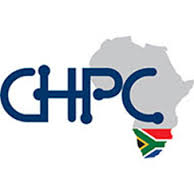In this special guest feature from Scientific Computing World, Nox Moyake describes the process of entrenching and developing HPC in South Africa.

Noxolo Moyake is a Research Communications Specialist at CHPC.
The year 1994 marked a much-anticipated turning point in South Africa’s history, a time when all could have equal access to economic opportunities and when all could participate fully in the development of the country’s economy.
From 1994 to 2014, the GDP annual growth rate averaged 3.08 percent, reaching an all-time high of 7.1 percent in the fourth quarter of 2006. In that year, the South African government, through the Department of Science and Technology, decided to invest significantly in research in order to drive the much-needed social and economic development, with a plan to increase expenditure on research to one percent of GDP by 2010.
The idea was to increase the country’s capacity to create and disperse new knowledge, investing in new instruments required to ensure that the country not only had requisite capacity to generate new levels of knowledge, but also to cement South Africa’s position as an attractive destination for science and technology projects.
In 2007, the Centre for High Performance Computing (CHPC) was launched, followed by the South African National Research Network and the Data Intensive Research Initiative of South Africa; together the three are referred to as the National Integrated Cyber Infrastructure System (NICIS).
Flagship projects (2007 to 2014)
 Once the CHPC was established, the next question was how does government develop and encourage use of HPC in South Africa. A few strategies were used to entice interest in the field.
Once the CHPC was established, the next question was how does government develop and encourage use of HPC in South Africa. A few strategies were used to entice interest in the field.
First was the creation of flagship project grants. The centre advertised and granted two-year funding to eleven flagship projects across a number of research domains. Each project aims to solve a major science or socio-economic challenge in South Africa and in the continent in general, using the centre’s computational resources.
The use of HPC resources provided training and exposure to parallel computing and set the ground for development of additional HPC capacity in South Africa. In addition, the flagship projects advanced research activities in these specific domains and accelerated the building of HPC capacity. University postgraduate student were central to these developments.
Human capital development
Second to the HPC role-out phase was the creation of internships, studentships and year-round training courses to CHPC users to ensure that they make optimum use of HPC resources.
The CHPC Winter School, usually attended by 100 students, is a favourite among computer science and computer engineering students across South African universities. The school is an introduction to parallel programming and covers topics including: an introduction to HPC hardware, systems and techniques; multicore programming with OpenMP; using message passing (MPI) on cluster supercomputers; high performance co-processors; and rapid prototyping for HPC with Python.
Occasionally the CHPC will invite international pioneers and innovative developers in the HPC field to present workshops and lectures in South Africa. These lectures are open to all researchers and HPC users to attend.
In 2012, the centre introduced the Student Cluster Competition as a component of its Winter School. Following a national call, students shortlisted and are introduced to parallel programming and taken through various aspects of the competition. They are then divided into groups and given an assignment that determines which groups will proceed to the national competition that takes place at the annual CHPC National Conference in December.
The winning team proceeds to the international competition at the International Supercomputing Conference in Germany. South African teams have performed very competitively in the international round, having won the overall prize in 2013, 2014 and 2016 and taken second place in 2015 and 2017.
The annual CHPC Conference
The third leg of entrenching an HPC footprint in South Africa involves the now established and growing CHPC National Conference. The conference serves as a showpiece of the work done by users of the centre in the previous year and brings together renowned international and domestic speakers in the field, academia and industry.
Delegates attended a number of specialized workshops and tutorials, birds of a feather and special interest group sessions. Over the last few years, the conference has held a special forum of Southern African Development Community session that is focused of the establishment of an HPC centre that will be focused on supporting research carrying a shared social and economic impact on the region.
The future
 The CHPC currently has about 1,000 users; most are in academia and others in industry.
The CHPC currently has about 1,000 users; most are in academia and others in industry.
System engineers and research scientist provide regular support to users. The centre supports research from across a number of domains and participates in a number of grand international projects such at the CERN and the SKA projects.
The CHPC contributes as a tier-two facility to the CERN project. The SKA project is fast developing momentum and the centre has established an SKA Readiness Project that aims to source, and distribute recently retired HPC equipment as training machinery for the eight African partner (Zambia, Botswana, Mauritius, Ghana, Mozambique, Kenya, Namibia, Madagascar) countries that will be hosting SKA together with South Africa.
The first round of distribution of HPC machinery and introductory training is almost complete, with Kenya and Mozambique planned for later this year.
A million reasons to back SKA project
The Council for Scientific and Industrial Relations (CSIR) has through its Centre for High Performance Computing (CHPC), donated a portion of its supercomputer to Ghana, where it will be used for human capital development purposes in preparation for the data processing requirements associated with the Square Kilometre Array’s (SKA) project.
The donation of the supercomputer components is part of the launch of the first African SKA satellite outside of South Africa that recently took place in Accra, Ghana.
The single rack of compute nodes, with storage and network, was part of the CHPC’s decommissioned Tsessebe supercomputer and is now dedicated to training and capacity development at the Ghana Earth Observatory and will form the initial part of the processing of the data emanating from the satellite.
The technology transfer forms part of the first phase of the CHPC’s SKA Readiness project involving repurposing and transfer of HPC systems that are out of production to create HPC imprints in the eight SKA Africa partner countries: Namibia, Zambia, Botswana, Mauritius, Mozambique, Kenya, Madagascar and Ghana.
The Department of International Relations and Cooperation (DIRCO) through the African Renaissance Fund funds the SKA Readiness project. SKA Africa partner countries, with the exception of Kenya and Mozambique who are later in the year, have received HPC systems from three supercomputers: Ranger from the Texas Advanced Computing Center (TACC) in the United States of America, Cambridge supercomputer from the University of Cambridge in the United Kingdom and Tsessebe from the CSIR in South Africa.
The second phase of the SKA Readiness project will start in 2018 through the donation and distribution of Stampede, a next-generation supercomputer from TACC, which will expose the partner countries to different types of HPC technologies.
Noxolo Moyake is a research communications specialist at the CHPC.
This story appears here as part of a cross-publishing agreement with Scientific Computing World.



